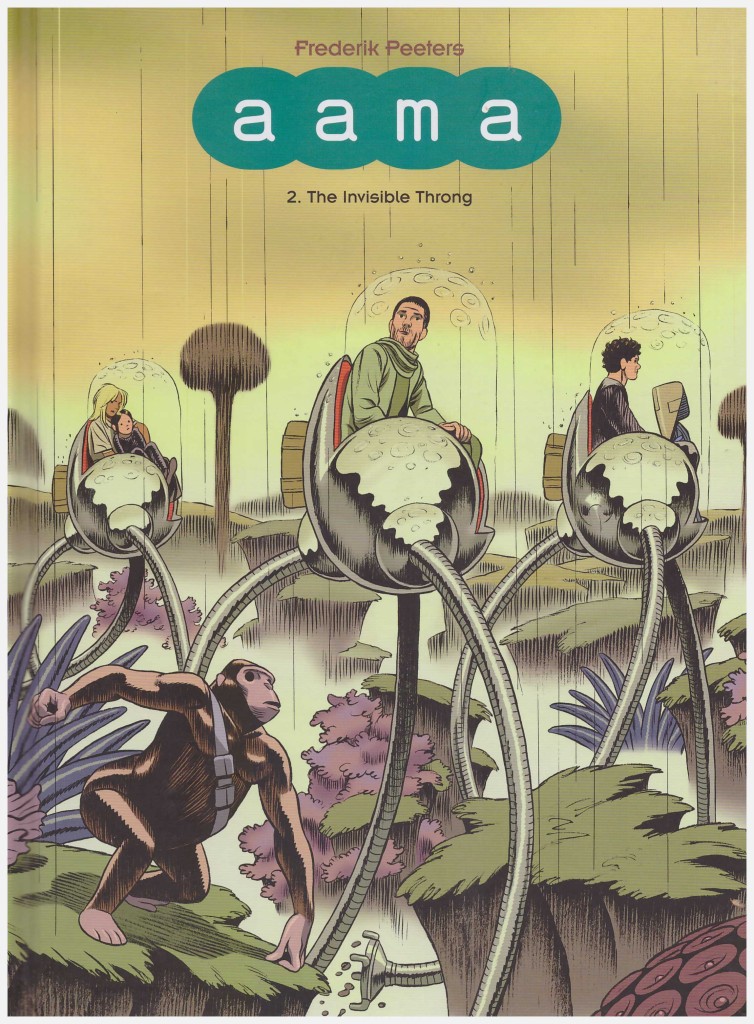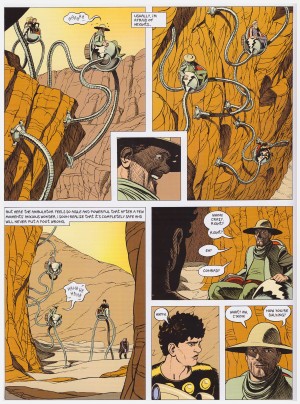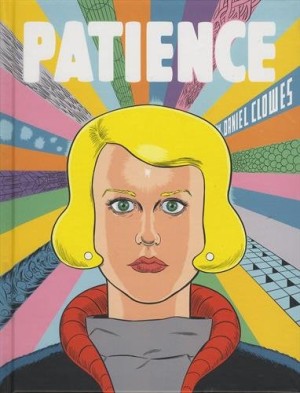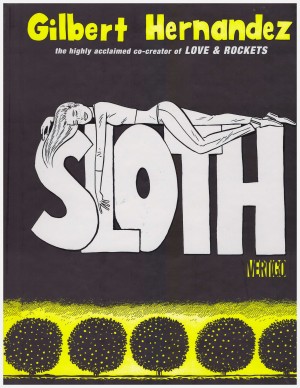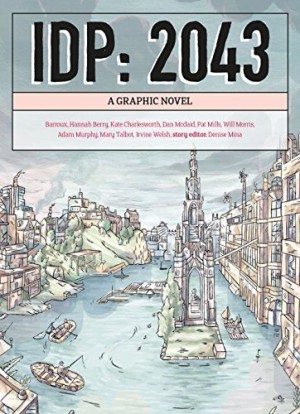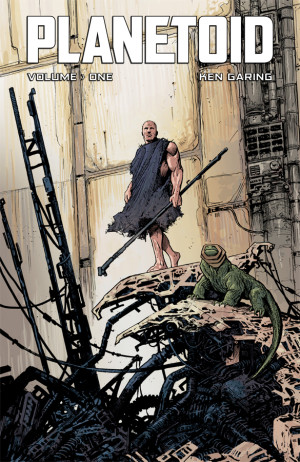Review by Frank Plowright
Aama runs three separate narratives in parallel, with the connector being Verloc Nim, rescued by his brother Conrad for an interplanetary expedition at the point where he’d just hit rock bottom. As in The Smell of Warm Dust, the over-riding thread is the recent past, as the amnesiac Verloc reads the journals he’d written detailing previous weeks. The accompaniment is Verloc dipping back into his earlier past, talking about his former partner and daughter. The present is the amnesiac Verloc walking back across the planet in the company of robot ape Churchill, whose appearance is modified from the recent past.
It’s a complex brew from Frederik Peeters, using science fiction to raise questions about the building blocks of life, which for the purposes of this story is Aama. It’s an experimental colony of pico-robots sent to a planet evolved to a state equivalent to Earth’s Cambian era, with very primitive life restricted to water. The idea was to loose Aama as an experiment, but before that occurred there was a financial downturn and the scientists accompanying Aama were forgotten before precise instructions could be transmitted. The scientific team believed themselves abandoned, a schism developed, and Aama’s inventor Professor Woland departed with her followers to a different area of the landmass.
The bulk of the narrative is that of the recent past as Verloc, Conrad and Churchill make their way from one camp to the other in the company of a two scientists, and a mute girl who just appeared on the planet before Verloc and Conrad arrived. She bears an uncanny resemblance to Verloc’s daughter whom he’s no longer permitted to see. As they progress from the original camp toward that of Woland the life forms they encounter are increasingly sophisticated, and none are endemic.
An abundance of intriguing scientific ideas are accompanied by Peeters accentuating the spiritual also. Parallels can be drawn between the progress of technology embraced by Conrad and shunned by Verloc, and Aama, and the spirituality takes the form of personal beliefs rather than an organised method. The sequences set in the past increasingly focus on Verloc’s daughter, whose advanced development is a cause for official concern. Dreams also figure heavily, with Verloc disturbed by his, although at this stage there appears no direct connection to events.
Peeters’ imagination flows through his art. As seen on the cover, the transportation used for crossing the planet is a form of one-man pod raised high above the surface with extended hydraulic legs. The use of these is utterly convincing, and the futuristic city in which Verloc lives equally so. It’s simultaneously grubby and worn while being appropriately strange and beguiling. This is contrasted by the weird new forms of life Peeters creates as our protagonists continue their trek, ending the book with a real horror. The ghastly approximation of humanity is investigated further within The Desert of Mirrors.
There may not be much in the way of action, but in the questions it prompts and the ongoing tension, Aama is first rate science fiction.
